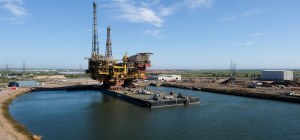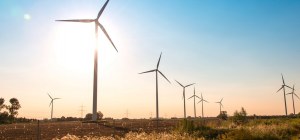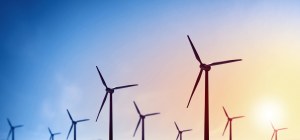828: How the wind is blowing

Angus Walker Partner
Today’s entry reports on the state of wind energy.
The last blog entry noted the first coal-free week in the UK since the 19th century, although only 2.2% of electricity was coming from wind power. What is the current state of wind power development and how much can it replace coal and gas?
In September 2018 the Walney windfarm in the Irish Sea was heralded as the largest windfarm in the world. (eg here). Keeping up the theme of correcting excitable news stories, it isn’t the largest windfarm in the world by a long way, but it is the largest *offshore* windfarm in the world. There are 14 larger onshore windfarms – eight in China, five in the US and one in India. The largest, Gansu, has a capacity of 6800MW, more than twice the second largest and more than ten times Walney at 659MW.
Walney will soon fall off the offshore podium, however, now that Hornsea One has started producing electricity as it continues to be built. This project, east of the Humber Estuary (and east of the eponymous town of Hornsea, in fact, and nothing to do with Hornsey in London), will have a capacity of 1200MW when it is complete next year. Hornsea Two will be even larger and Hornsea Three larger still.
This useful map shows the current status of offshore windfarms, ranging from grey – early planning – to dark blue – in operation.
It is difficult to appreciate the scale of these windfarms. Between them, the three Hornsea projects will cover an area larger than London. Each turbine is 190m tall, taller than the Gherkin or Tower 42 in London.
Once Hornsea, Dogger, Boreas, East Anglia and Seagreen off the Scottish coast are up and running, they will have a capacity of around 12GW. That is about a third of the electricity that the UK needs and so the target of 30% by 2030 looks eminently achievable.
Although the figure was only 2.2% from wind when I wrote the last blog entry, today it has improved to 10.9%, and still nothing from coal. That is a lot better, but illustrates the variability that is wind power’s weakness. However, combined either with other ‘base load’ electricity generation such as nuclear, and/or significant battery and hydroelectric storage, and/or connections to other countries for greater resilience, it should be possible to have a fossil fuel free future.
Denmark is a leader in this area, generating 87% of its electricity from renewable energy sources, the vast majority of which is wind. This map shows the relative share of renewable electricity each country produces. The Netherlands is surprisingly low at 6%, and Georgia surprisingly high at 99%.
One final thought: I wonder if taking energy from wind actually has an effect on the wind and hence the weather – the wind must lose energy if it is driving turbines after all.





